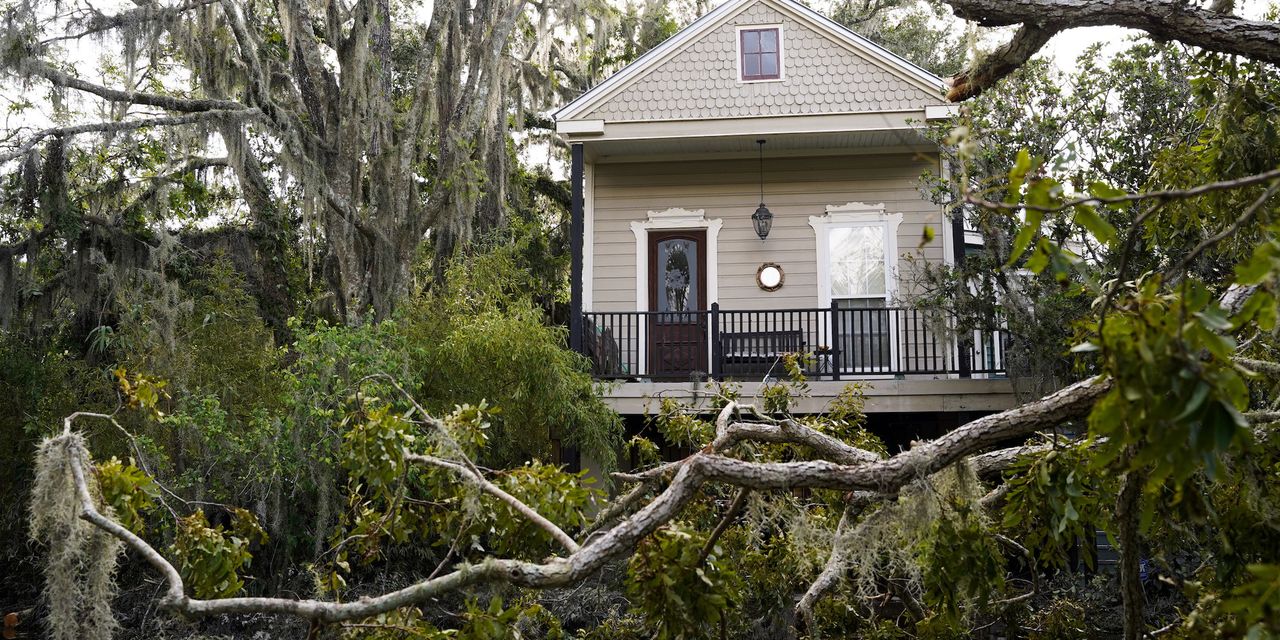NerdWallet: How to shore up your finances so you’re ready for the next natural disaster

This article is reprinted by permission from NerdWallet.
Emergency preparedness experts recommend that you have a “go bag” and a “stay bin” for disasters: kits with supplies to help you survive a few days if you have to evacuate your home or shelter in place.
Preparing your finances for natural disasters is also smart. Having cash on hand, access to credit and the right insurance coverage can help you get through perilous times. Fortifying your home against disasters also can be a good investment.
Not everyone can make these preparations, of course. People with the fewest resources often suffer the brunt of disasters. But anything you can do to bolster your situation now could help you limit the toll.
Stash some cash
Having cash on hand could help you pay for groceries, gas, shelter and other necessities if ATMs and payment systems aren’t functioning, which could happen if the power goes out or cyberattacks knock systems offline.
You may need more than you think, especially if you’re away from your home for more than a few days. Insurance consumer advocate Amy Bach recommends keeping at least $2,000 in a safe place somewhere in your home. After a widespread disaster, there is often “incredible competition” for rentals and other lodging, and a cash deposit could help you secure a place to stay, says Bach, executive director of the nonprofit United Policyholders.
The currency should be in addition to any emergency savings you have at the bank. Again, anything is better than nothing. While financial planners typically recommend an emergency fund equal to three to six months of expenses, even a couple hundred dollars can help you cope.
Get some credit
Your insurance may have high deductibles or other limitations on your coverage that require you to pay thousands or even tens of thousands of dollars out of pocket. Earthquake and hurricane policies, for example, often have deductibles of 10% or more of the insured value. Insurers also may limit how much they pay for upgrades needed to meet current building codes or for replacing older roofs, Bach says.
A home equity line of credit can give you access to a relatively inexpensive source of money in an emergency. You’ll need to set this up long before disaster strikes, since lenders won’t let you borrow against a damaged home. Resist the urge to tap this credit for other purposes, so that the money is available when you need it.
An alternative if you’re a renter or otherwise can’t qualify for a HELOC is to ask your bank for a personal line of credit. Credit cards can also help pay the bills if there’s enough available credit. Once you have $500 or so set aside for emergencies, consider paying down your credit cards and aim to use no more than 30% of your credit limits. Using even less of your credit limits would be even better, because it frees up more space on your cards and also helps to build or maintain your credit scores.
Try to cover the big risks
Check your home’s susceptibility to various disasters at freehomerisk.com, a database created by HazardHub, which supplies risk data to insurance companies. Each hazard your property might face is graded from A to F. The lower the grade, the more you should consider ways to mitigate the risk if you can, says HazardHub co-founder Bob Frady.
That could mean buying additional coverage. A typical homeowners or renters policy doesn’t cover damage from floods or earthquakes, for example, but such coverage can be purchased separately.
Review your policy to see what’s covered and what’s not. Make sure you have replacement coverage for your possessions rather than actual cash value coverage, which pays considerably less. You’ll also want at least 24 months of loss-of-use coverage, which pays for your living expenses while your home is rebuilt, Bach says. Widespread disasters can cause even longer rebuilding times.
For example, “It usually takes at least two years to rebuild after a wildfire,” she says.
Protect your property if you can
There’s no way to make your home entirely disaster-proof, but there are ways to “harden it” to reduce potential losses, Frady says.
Frady helped start HazardHub after a friend’s home suffered significant uninsured damage when a nearby river overflowed its banks. The friend didn’t realize she lived next to a flood zone because she wasn’t required by her mortgage lender to buy flood insurance, Frady says.
If she’d known, she could have purchased the insurance and taken steps to protect her property, such as regularly changing the batteries in her sump pump, which failed, and keeping valuable items out of the basement or other low points in the house.
Read next: How a ‘self-nudge’ could help you make better money and life decisions
Installing storm shutters may reduce losses to hurricanes and tornadoes, while bolting your house to its foundation can help it survive an earthquake.
“There’s power in knowing what the perils are, and that can lead you to create a safer location,” Frady says.
More From NerdWallet
Liz Weston writes for NerdWallet. Email: lweston@nerdwallet.com. Twitter: @lizweston.

Comments are closed.